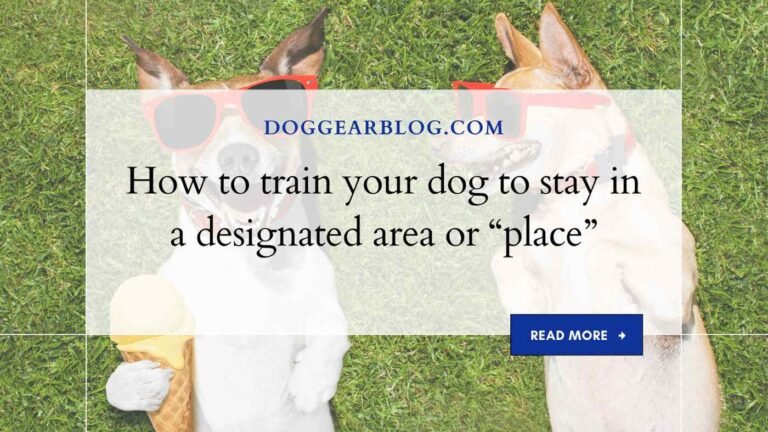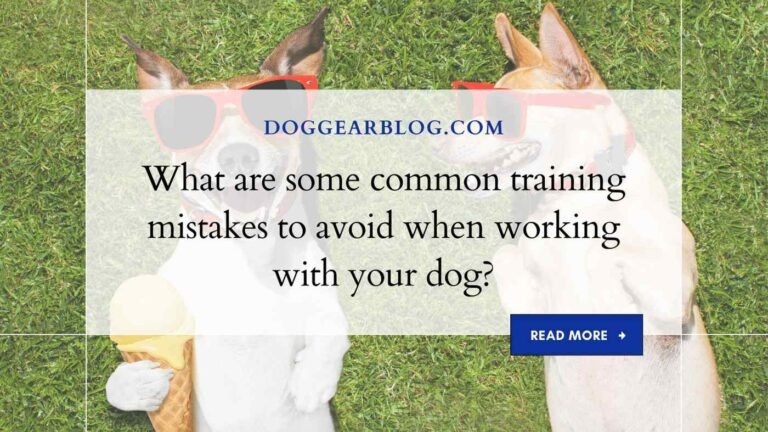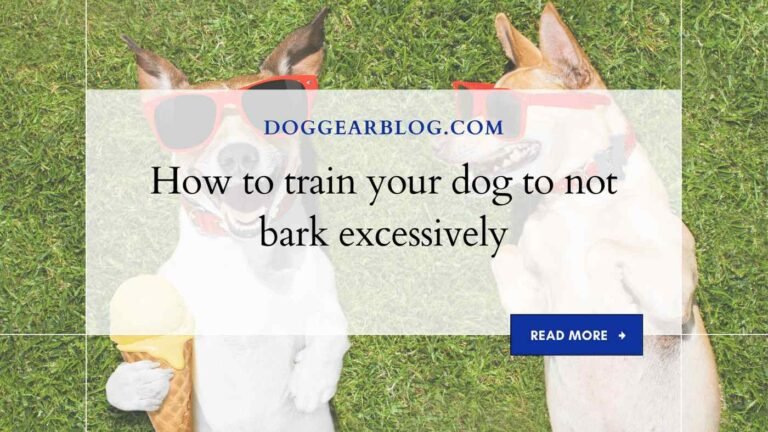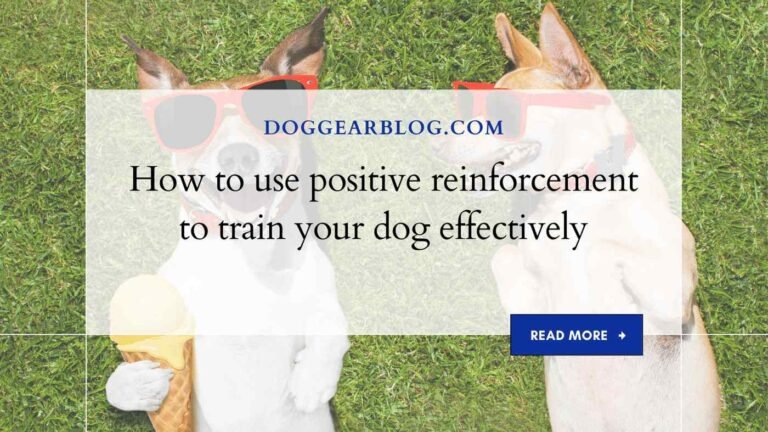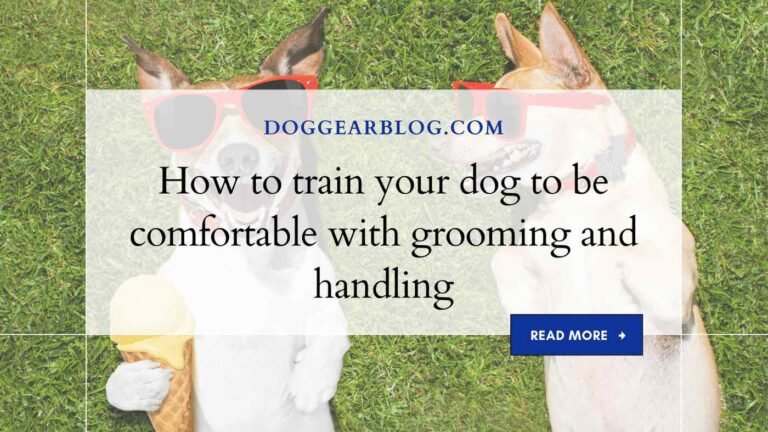How to train your dog to not be fearful of loud noises such as thunderstorms and fireworks
As much as we love the thrill of watching fireworks or hearing the loud crash of thunder, some dogs just can’t handle it. Fearful and anxious behavior can disrupt their daily routine and make them miserable during these occasions. But fear not! With a little bit of patience and training, you can teach your furry friend to overcome their noise-related fears.
In this blog post, we’ll explore tips and tricks on how to train your dog to not be fearful of loud noises such as thunderstorms and fireworks – making it easy for both you and your pooch to enjoy those beloved summertime festivities.
What is Fear?

Fear is a natural response to danger and can be adaptive in some situations. However, excessive fear can lead to problems such as displacement aggression and destructive behavior. Poorly managed fear can also cause reluctance to enter or leave a Situation, Hyperactivity, Inability to relax, insomnia, and difficulty concentrating.
There are several things you can do to help your dog overcome excessive fear of loud noises:
- Start early: Obviously the best way to get your dog over excessive fear of loud noises is to prevent it from happening in the first place. If your dog is already fearful of loud noises, start training them at an early age so they learn that these sounds are not dangerous.
- Train consistently: Fear is a complex emotion and it takes time for your dog to learn how to cope with it confidently. Be consistent with your training methodology and never give up on your dog.
- Use positive reinforcement: Often times rewarding your dog for behaving calmly around loud noise will help encourage them to continue this behavior even in difficult situations. This may include treats or verbal praise.
- Use distraction: If your dog is exhibiting signs of excessive fear, try using distractions like a toy or favorite person. This will help take their mind off of the loud noise and hopefully help them feel less anxious.
- Consult a veterinary professional: If your dog is exhibiting signs of excessive fear and symptoms are becoming severe, it may be best to see a veterinarian. They can perform additional tests such as checking for a hearing loss or evaluating the cause of the dog’s anxiety.
Types of Fear

There are a few different types of fear that can affect dogs. One type is the Fear of Loud Noises or Thunderstorms. This type of fear usually starts when a dog is very young, maybe around 8 weeks old. The Dog may start to be afraid of loud noises such as thunderstorms and fireworks. This type of fear can be hard to overcome because it is based on something that happened in the past. Some things you can do to help get your dog over this fear are:
1) Start Treatment Early- Dogs that experience Thunderstorm Phobia often start treatment early on, before the fear becomes too entrenched. If you suspect that your dog may have a Thunderstorm Phobia, begin work on treatment at 8 weeks old and continue to work with the dog every week or two until the Fear subsides. This is important because Giving your dog medical help early will minimize any long-term problems caused by the Fear and could potentially save your pet’s life!
2) Positive Reinforcement- one of the most effective ways to deal with fears is through Positive Reinforcement Training (PRET). Pret works by rewarding dogs when they behave in a desired way. When training your dog to not be fearful of loud noises, rewards should always include positive reinforcement such as pets, verbal praise, treats, toys or games. Using rewarding techniques allows you to extinguish your dog’s fears while also providing them with positive experiences which will make them want do behave in predictable ways in the future.
3) Use distractions- another way to help lessen the fear of loud noises is to use distractions. This can be done by offering your dog a toy, food lure or scratch post in the area where the noise is coming from. Using these environmental distractions will help take your dog’s focus away from the noise and help them become less fearful of it.
4) Playtime- one of the best ways to alleviate fears is through playtime. Playing with your dog helps build a strong relationship and enables your dog to have fun while also feeling safe. Playing together will also help teach your dog how to cope successfully with difficult situations in life.
Causes of Fear in Dogs
Fear of loud noises, such as thunderstorms and fireworks, is a common problem in dogs. There are many causes of this fear, but the most common one is unresolved aggression or anger from previous experiences. Dogs who are fearful of loud noises often act out in an attempt to protect themselves.
One way to help your dog overcome his fear of loud noises is to find out what triggers it. This can be done by playing some recordings of loud sounds together and observing how your dog responds. Another method is to use positive reinforcement training methods, such as teaching your dog to “”sit(), stay(), or come when called””, after listening to a recorder of a calm sound instead of a scary noise. If these methods don’t work, you may need to see a professional who can help your dog learn how to be around loud noises safely.
Some dogs are also afraid of certain smells, such as blood or feces. This is usually caused by a traumatic experience from which the dog has never recovered. Treatment for this type of fear usually involves gradually exposing your dog to the smell over a period of several weeks, and then rewarding him with treats after he does not show any signs of fear.
Solutions to Reducing or Eliminating Fear in Your Dog
There are many solutions to reducing or eliminating fear in your dog. Below I will outline some of the most common techniques and what works best for each individual dog.
One of the first things you can do is to identify your dog’s fear triggers. This could be something as simple as a noise they don’t like, such as thunderstorms or fireworks, or it could be something more complex, such as a specific person or location. Once you know what triggers your dog’s fear, you can start to work on addressing that fear. There are different ways to do this, and what works best for each individual animal will vary.
One of the simplest methods is to use positive reinforcement – rewarding your dog when they are calm and not displaying any signs of fear. This can be done by presenting them with treats, petting them, or making some other type of positive interaction. repetitions will help increase the chances that your dog will associate the triggered event with the reward and become less afraid of it in future. If using rewards is not an option (for example if someone else in the house is allergic), then another way to reinforce obedience might be through Classical Conditioning – pairing a clear cue (like “stay”) with an unpleasant event (like being shocked).
Whenever your dog responds obediently by staying calm, you will provide him with a clear reminder that he does not have to worry about that particular thing anymore. This technique can also be used with unfamiliar situations or people; after your dog has learned to be calm around people or things they’ve never seen before, you can use the cue “stay” in new situations to help him stay calm.
Another approach is to use positive reinforcement and desensitization/re-sensitization therapy, which helps your dog learn to associate the fear trigger with a reduced level of anxiety. This could involve exposing your dog to the trigger gradually over time, escalating it gradually, or using a combination of both techniques. In some cases, medications also may be necessary to help reduce anxiety levels.
Finally, it is important to remember that just because one technique doesn’t work immediately for your dog, does not mean that it isn’t worth trying. Different things work for different dogs, and often times it takes several different approaches over time to find what works best for them.
Conclusion
Training your dog to not be fearful of loud noises such as thunderstorms and fireworks can be a significant challenge. Some tips on how to do this include making sure that you are consistent in your training, rewarding your dog for behaving calmly during noise events, and providing positive reinforcement when he does not show signs of being afraid. With the help of these strategies, you should be able to successfully train your dog not to react fearfully to loud noises.

